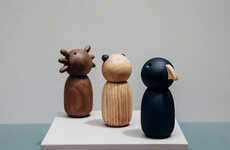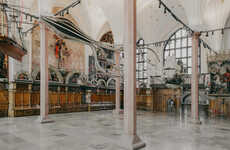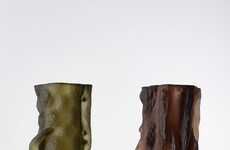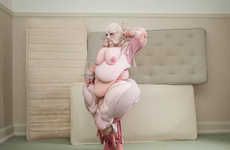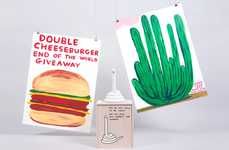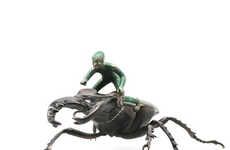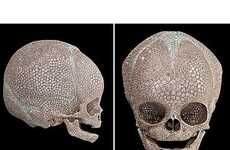
Patricia Piccinini's Frightening Hyper-Realist Artwork
jodie anderson — March 22, 2009 — Art & Design
References: patriciapiccinini.net
Patricia Piccinini’s controversial hyper-realist sculptures received critical acclaim in 2003 when she represented Australia at the Venice Biennale.
Hyper-realist sculptures force the viewer to respond to the artwork as they would to the presence of the real thing.
Most of Piccini’s works are based on bioscientfic practices of the manipulation of living beings. Stem cell research, genetic engineering, cloning, bioelectronics, and technologically-mediated ecological restoration and kin formation are dominant themes in her work.
Pretty freaky stuff, but it forces us to think about what it means to be human--or animal?
Hyper-realist sculptures force the viewer to respond to the artwork as they would to the presence of the real thing.
Most of Piccini’s works are based on bioscientfic practices of the manipulation of living beings. Stem cell research, genetic engineering, cloning, bioelectronics, and technologically-mediated ecological restoration and kin formation are dominant themes in her work.
Pretty freaky stuff, but it forces us to think about what it means to be human--or animal?
Trend Themes
1. Hyper-realistic Sculptures - Opportunity for artists and designers to create hyper-realistic sculptures that challenge viewers' perception of reality.
2. Bioscientific Artwork - Opportunity to explore the intersection of art and bioscience, using techniques like genetic engineering, cloning, and bioelectronics in creative expressions.
3. Technologically-mediated Ecology - Opportunity to delve into the integration of technology and ecology, creating artwork that addresses issues of ecological restoration and kin formation.
Industry Implications
1. Art and Design - Disruptive innovation opportunity for artists and designers in creating mind-bending hyper-realistic sculptures.
2. Biotechnology - Disruptive innovation opportunity for biotechnology industry to collaborate with artists and explore the artistic implications of genetic engineering, cloning, and bioelectronic technologies.
3. Environmental Conservation - Disruptive innovation opportunity for environmental organizations to partner with artists in creating artwork that raises awareness about ecological restoration and kin formation.
6.9
Score
Popularity
Activity
Freshness


